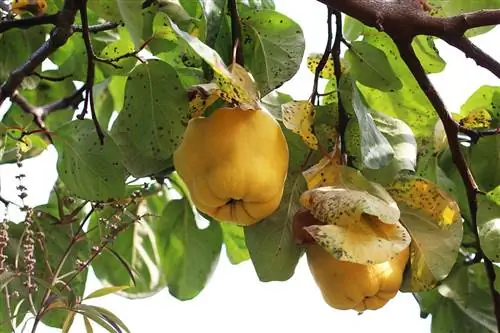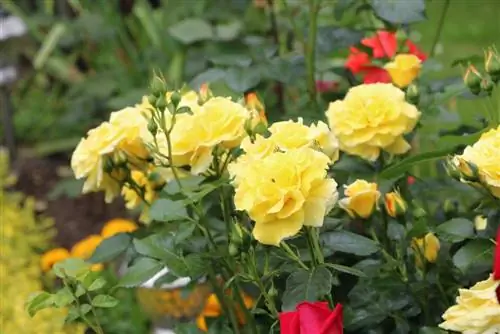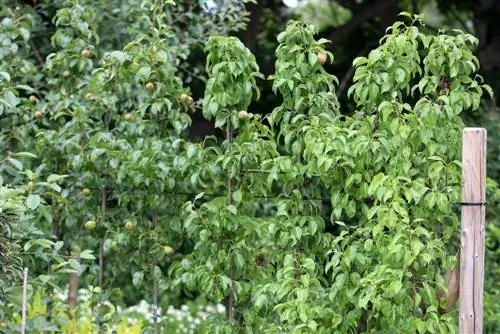- Author admin [email protected].
- Public 2023-12-17 03:39.
- Last modified 2025-06-01 06:48.
If you want to achieve strong growth and lush harvest yields from fruit trees, you should find out in advance when the right planting time has come. Below you will find the 7 best tips.
All year round planting times
Theoretically, a fruit tree can be planted at any time of year as long as there is no ground frost. For this reason, planting between spring and late autumn is usually recommended. However, various factors that have advantages and disadvantages should be taken into account. The aim is to achieve optimal growth, root establishment and he althy growth for rapid and extensive fruit production. Therefore, before buying and/or planting, you should pay attention to when the best time is actually to plant fruit trees.
Differences
The best time to plant is determined by what type of fruit trees you have. There can be serious differences in terms of optimal planting conditions because there are different weather and soil requirements. This automatically leads to different planting times. The “species” are differentiated as follows:
- Bale goods
- Containerware
- bare root specimens
- respective types of fruit
Fruit varieties for spring planting
For the best time to plant the respective fruit varieties, the most important thing is how they cope with the new location and, consequently, how quickly the roots take root. The focus here is primarily on the winter season. By the time frost begins, a fruit tree should have developed enough energy and defenses to survive the cold season well. There are fruit varieties that (only) develop splendidly when it is warm and are therefore not ideal for autumn planting. The temperatures shouldn't be too high for growth, so summer is out of the question. Planting in spring until March / April is therefore recommended. This leaves enough time until winter to grow vigorously.
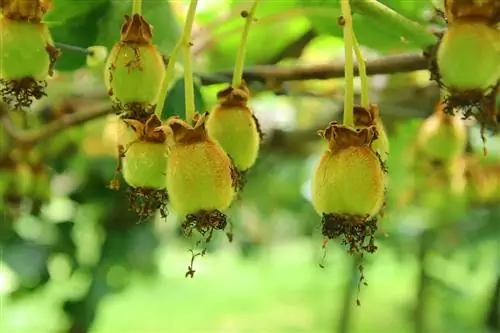
The types of fruit that have their best planting time in spring include:
- Peach trees
- Kiwi trees
- Nectarine trees
- Apricot trees
- Fig trees
Varieties for autumn planting
There are certain types of fruit for which the optimal planting time is between autumn and spring. These are usually domestic specimens. They are used to the cool Central European climate conditions. As long as there is no frost, they can be planted. However, autumn is ideal because the ground is still slightly warmed up from summer. This has advantages for the growth of young plants in particular. The local fruit tree varieties include in particular:
- Apple trees
- Pear trees
- Plum/damson trees
- Cherry trees
Note:
Not all pear, plum, plum and apple trees are suitable for autumn planting and should therefore be planted in spring. Certain exceptions are the apple trees of the early variety “Jakob Fischer”, the “Bühler Frühzwetschgen” and the “Konstantinopler Apfelquinte” variety.
Bare root fruit trees
Bare-root fruit plants are usually trees that have been grown industrially from commercially cultivated land. They have already grown up there. They are offered for sale without soil balls, purely with the bare roots. They are usually available between October and April. It is often assumed that these can be planted in the fall. However, the best time to plant is between March and early April. This is based on growth, which is much more successful shortly before vegetation begins. In addition, the roots are given enough time until the start of winter to settle in well and to be able to ensure adequate supply until then.
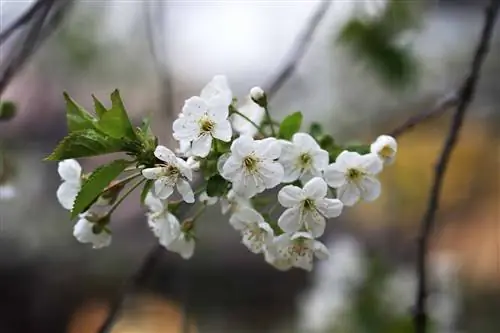
Containerware
If you buy your fruit trees in containers, you will receive them with the root supply system intact. When it comes to planting time, this means that they can also be planted in summer in addition to spring and autumn.
Please note the following:
- With container goods, plants have grown in the container
- no container goods if “packaging” only serves for better transport and “clean” sale (plants have not grown in them)
- only plant container goods in spring - other potted goods in autumn
- Containered goods are easier to pull out of box
- often marked with “C”
- If in doubt, always ask the provider
Fruit tree with bales
A fruit tree is most robust when it is dug up with bales and sold. Since the roots have already established themselves in the soil, growing in the new planting hole is usually easy. In order to avoid dry periods and to use the plants' energy boosts, baled goods are planted in spring or autumn.
Flowering time
If flowers have already formed on bare-root fruit tree varieties in early spring, this condition deprives the roots of (too) much energy. This can subsequently become a problem for proper growth because there is a lack of energy for root establishment. Therefore, you should avoid buying specimens with buds. This does not apply to bale and container goods.
Plant immediately
Bare-rooted fruit trees can survive for a few days without soil as a supply base, but this is not conducive to rapid, vigorous growth. The sooner it is planted after purchase, the better the rooting will be. For all other “sales versions”, it is also advisable to plant them quickly after purchase so that they can get used to their new surroundings as quickly as possible and the roots can absorb the supply.
Tip:
Roots without soil only store moisture temporarily. Before you put it in the ground, the fruit tree should be placed in a bucket of water for two to three hours. In this way, the roots soak themselves up and survive the time until the soil absorbs their supply better.
Frequently asked questions
When is the best time to transplant older apple trees?
This is autumn. It is best to choose a planting time immediately after the leaves have fallen. Then an apple tree has a lot of energy left over to invest in moving it to a new location.
What should you consider during summer planting?
Summer generally brings with it the risk of drought. In order for a fruit tree to grow well, it needs a relatively high amount of moisture, which is usually only guaranteed in summer if you water it yourself. For this reason, summer is not often used as a planting season. This particularly affects bare-root specimens, whose chances of growing in summer are significantly reduced.
Why is planting in autumn before the start of winter dormancy recommended?
In domestic fruit tree varieties, only the growth of above-ground parts of the plant stops during winter dormancy. The roots continue to grow and can therefore take root even during the winter season. By the beginning of the growing season they are strong and produce more new shoots.


